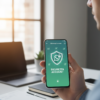If your number Whatsapp is limited or blocked, it is usually not “bad luck”: almost always there is a strategic or compliance error. WhatsApp marketing isn't easy: requires clear rules (opt-in, templates, time windows), adequate tools, and constant monitoring of the number's reputation. Without these elements, DIY exposes you to reports, drops in quality, and, in the worst cases, suspension.
Why do we end up in blocks or limitations?
- Lack of valid opt-inWhatsApp requires explicit consent that clearly indicates that the user accepts messages on WhatsApp and from which company. Without opt-in, the risk of reporting and restrictions increases.
- Messages outside the help window: after 24 hours from the customer's last message you can contact them again only with an approved template; “free” out-of-window submissions generate friction and negative feedback.
- Incorrect content or frequencies: spikes in complaints/“block & report” cause quality to drop and trigger statuses like Flagged or Restricted.
- Use of unofficial systems or bulk automationsWhatsApp prohibits the unauthorized use of automations and mass sending; it may limit or remove access to its services.
The basic rules of WhatsApp marketing (that many ignore)
- Consent first and foremost
The opt-in must be clear, visible, and related to the sending company. It can be collected through third-party channels (website, email, IVR, app), as long as it complies with local laws and policies. - Approved templates and message categories
To start conversations or write outside the 24h window you need approved templates (marketing, utilities, authentication, service). - 24h support window
When the customer writes, a 24-hour window opens in which you can respond freely; once the window closes, you must use a template. - Number reputation and sending limits
The quality (green/yellow/red) influences the status of the number (Connected/Flagged/Restricted) ei messaging limits; low quality = lower limits. - Costs by conversation category
Prices vary by country and category (marketing, utilities, authentication, service) and are charged upon delivery. Planning carefully avoids waste.
Why DIY is risky
Sending by hand or using unofficial tools often leads to:
- opt-in do not track,
- poorly written or unapproved templates,
- unsanitized lists,
- random frequencies and timings,
- no quality/limit control.
Result: more reports, worse deliverability, uncontrolled costs, and the real risk of limitations or bans.
How to start again if you have been limited
- Strategic pause on marketing mailings and check the status/quality. Consensus Audit: retains proof of opt-in and updates collection interfaces.
- List cleaning: Remove inactive, non-opt-in, or opt-out numbers.
- “Value” template: utility first (order status, reminders, personalized info) and marketing only to consenting segments.
- Warm-up and frequency capping: restart gradually, monitor quality and reduce shipments if it drops.
What does it do? SendApp to avoid blocks and increase results
- Official Meta API: policy-compliant submissions, correct template and category management.
- Multi-channel opt-in collection with compliant texts and traceability.
- Segmentation & Personalization: useful, relevant, non-spam messages.
- Scheduler with 24h rules and templates: no “out of window” sending by mistake.
- Monitor quality and limits in real time: alert on Flagged/Restricted and automatic repayment plans.
- Performance and cost analytics by category to maximize ROI.
How much can a “well-done” WhatsApp marketing earn?
When you follow the rules and methodologies:
- very high open and response rates compared to other channels,
- faster conversions thanks to dialogue,
- costs under control because you send messages Alone to those who asked to receive them and with the right template,
- Stable reputation ⇒ Greater reach over time. These effects are difficult (if not impossible) to achieve with improvised submissions or unofficial tools.
Conclusion
WhatsApp is a very powerful channel, but it must be treated methodically. Strategy, compliance and official tools They are the key to avoiding roadblocks and turning conversations into revenue. This is exactly what SendApp: secure the channel and make it perform at its best, with expected, relevant and measurable messages.







